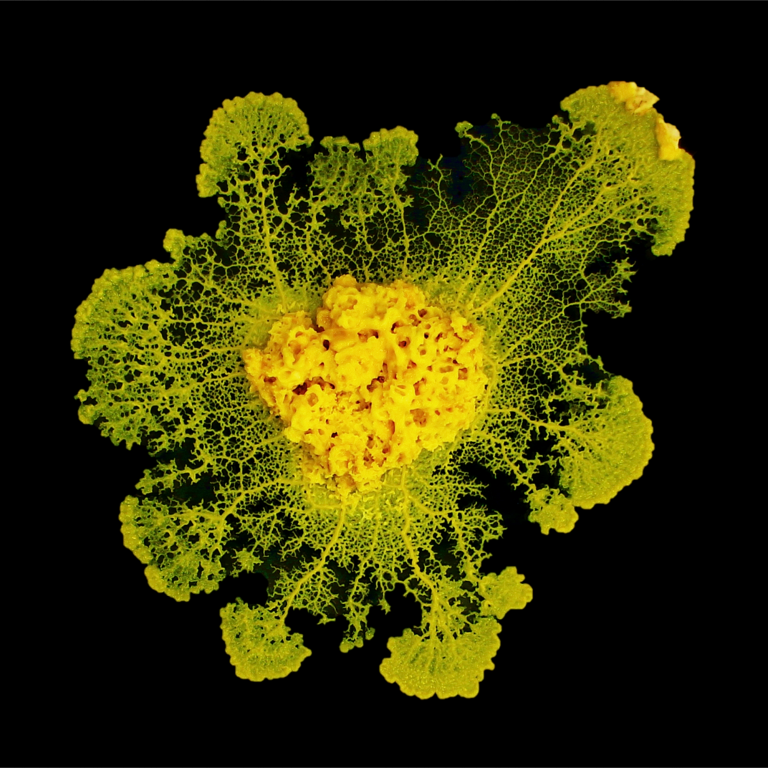
© Audrey Dussutour / CRCA / CNRS Images
View the mediaScientific news
The blob is an astonishing creature, one of the most fascinating in existence. This unicellular organism has no brain but is intelligent, and is capable of expanding over several square metres. It is gone into space with Thomas Pesquet, while also entering into our classrooms.

© Audrey Dussutour / CRCA / CNRS Images
View the mediaThe blob is an incredibly unusual creature, like something straight out of a science fiction film. Is it an animal, plant, or mushroom? None of the above. The blob is different, consisting of a single giant cell, it has no brain yet is capable of learning. This strange billion-year-old single-cell organism defies our understanding of biology and intelligent life. In its own way it is also a teacher since it can transmit knowledge to another blob by merging with it. We were not exaggerating when we mentioned science fiction, as it seems more like something that exists in the depths of space, silently waiting for that ill-fated astronaut to bring it back to Earth in their pack.
But the exact opposite is going to happen, as four blobs travel into space with Thomas Pesquet. On board the International Space Station, the French astronaut will conduct various experiments on these strange creatures. By filming them and subjecting them to various conditions (in particular by feeding them or not), the aim will be to study whether their behaviour and strategies change in low gravity.
And that's not all, these experiments will also be carried out on Earth by the students of around two thousand French classes. Each class will receive a blob to adopt and look after, with the help of the CNES and the CNRS. These lucky children will have to implement two experimental protocols. The first will test the exploration capabilities of the blob, placed in a petri dish on filter paper, without food. The students will have to regularly photograph the blob to measure its structure and movement. The second protocol will allow the same parameters to be assessed when the blob decides on an efficient feeding strategy by placing four oat flakes - which the blob "loves" - at equal distance apart.
On the occasion of this exceptional event, we propose you to dive into the mysteries of the blob, through a selection of photo and video reports that explore its multiple facets. But this is only the beginning: we are still far from having discovered all the secrets of this unique creature...
Our work is guided by the way scientists question the world around them and we translate their research into images to help people to understand the world better and to awaken their curiosity and wonderment.